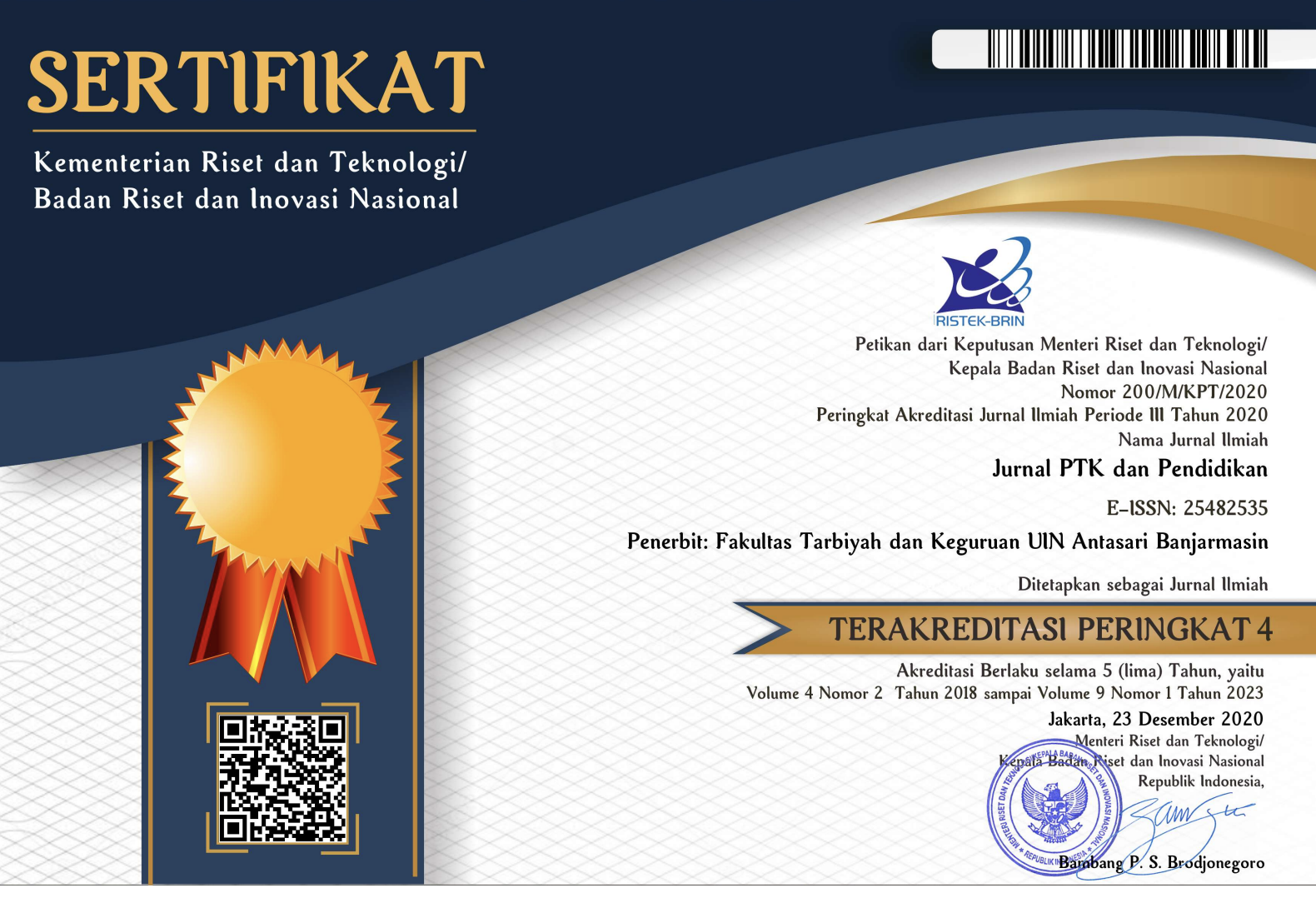AN ATTEMPT TO IMPROVE STUDENTS' HEALTH LITERACY SKILLS WITH BLOODYPEDIA BASED ON PROBLEM-BASED LEARNING ON CIRCULATORY SYSTEM MATTERS
DOI:
https://doi.org/10.18592/ptk.v10i1.12078Abstract
Health literacy is the capacity to obtain, process, and comprehend fundamental health information and health services that facilitate the formulation of informed health decisions. The objective of this study is to enhance students' health literacy abilities by employing problem-based learning media on circulatory system content. The Classroom Action Research method, employing a cyclic research model comprising two cycles with four stages—namely, planning, action, observation, and reflection—is expected to facilitate the improvement of health literacy skills among class XI students. The CAR methodology employs problem-based learning, which is conducted with 36 students. The data collection method employs test scores or scores on pre- and post-test health literacy questionnaires containing 10 questions, which will be compared on average as a reference for improving students' health literacy. The findings of this study indicate that there was an increase in health literacy skills, with a value of 13.86% in Cycle I and 13.96% in Cycle II. In conclusion, the results of this action research demonstrate that the problem-based learning model with Bloodypedia media is an effective method for improving the health literacy skills of grade XI students on the material of the human circulatory system. Keywords: Bloodypedia, health literacy, problem-based learningReferences
Almulla, M. A. (2020). The Effectiveness of the Project-Based Learning (PBL) Approach as a Way to Engage Students in Learning. SAGE Open, 10(3). https://doi.org/10.1177/2158244020938702
Faidah, M., Rusmanto, H., & Rahmawati, L. (2020). Islamic Values-based Sex Education to Prevent Loss Generation for Senior High School Students. Tadris: Jurnal Keguruan Dan Ilmu Tarbiyah, 5(1), 131–140. https://doi.org/10.24042/tadris.v5i1.5852
Fausih, M., & T, D. (2015). Pengembangan Media E-Modul Mata Pelajaran Produktif Pokok Bahasan “Instalasi Jaringan Lan (Local Area Network)” Untuk Siswa Kelas XI Jurusan Teknik Komputer Jaringan di SMK Negeri 1 Labang Bangkalan Madura.
Gentilucci, J. L. (2004). Improving School Learning: The Student Perspective (Vol. 68).
Khairina, I., Susmiati, Nelwati, & Rahman, D. (2022). Literasi Kesehatan Sebagai Upaya Peningkatan Perilaku Kesehatan Remaja. JAPI (Jurnal Akses Pengabdian Indonesia), 7(1), 1–8.
Machali, I. (2022). Bagaimana Melakukan Penelitian Tindakan Kelas Bagi Guru? Indonesian Journal of Action Research, 1(2), 315–327. https://doi.org/10.14421/ijar.2022.12-21
Madarik, M., & Puadi, H. (2023). Pembelajaran SKI Melalui Google Sites. Jurnal Pusaka, 13(1), 12–30.
Montaño, D. E., & Kasprzyk, D. (2008). Health Behavior and Health Education: Theory, Research, and Practice.
Nur Haliza, S., Sri Mujiwati, E., & Aziz Hunaifi, A. (2023). Penggunaan Bahan Ajar Leaflet Berbasis Qr Code dan Google Sites pada Materi Organ Pernapasan Manusia dan Hewan. PTK: Jurnal Tindakan Kelas, 3(2), 91–100. https://doi.org/10.53624/ptk.v3i2.129
Nurhaeni, D. (2022). Tingkat penerapan Literasi Kesehatan di Lingkungan Keluarga pada Masa Pandemi COVID-19. JKKP (Jurnal Kesejahteraan Keluarga Dan Pendidikan), 9(01), 115–126. https://doi.org/10.21009/jkkp.091.10
Nutbeam, D. (2000). Health Literacy as a Public Health Goal: a Challenge for Contemporary Health Education and Communication Strategies into the 21st Century. Health Promotion International, 15(3), 259–267.
Nutbeam, D. (2008). The evolving concept of health literacy. Social Science and Medicine, 67(12), 2072–2078. https://doi.org/10.1016/j.socscimed.2008.09.050
Rosiah, A., Sukarmin, S., & Sarwanto, S. (2019, July 29). Standard Education Using SWOT Analysis. https://doi.org/10.4108/eai.23-3-2019.2284910.
Suryanda, A.,Tasyari, S., Putri, F. N. A., Aurora, A. A., Nabilah, S., & Syahrani, Y. (2021). Identifikasi Media Pembelajaran Pada Materi Biologi Dalam Meningkatkan Pemahaman Konsep Peserta Didik di Masa Pandemi Covid19. BIO-EDU: Jurnal Pendidikan Biologi, 6(1), 1-8.
Sorensen, K., Van Den Broucke, S., Fullam, J., Doyle, G., Pelikan, J., Slonska, Z., & Brand, H. (2012). Health literacy and public health: A systematic review and integration of definitions and models. BMC Public Health, 12(80), 1–13. https://doi.org/10.1186/1471-2458-12-80.
Wati, E. R. (2016). Ragam Media Pembelajaran (A. Jarot, Ed.). Retrieved from www.solusibuku.com
Downloads
Published
How to Cite
Issue
Section
License
Copyright (c) 2024 Aulia Putri, Amanda Weliyanti, Rusdi Rusdi, Rizhal Hendi Ristanto, Daniar Setyo Rini, Ade Suryanda

This work is licensed under a Creative Commons Attribution 4.0 International License.
- The right to publication of all journal material published on the Jurnal PTK dan Pendidikan website is held by the editorial board with the author's knowledge (moral rights remain the property of the author).
- The formal legal provisions for access to digital articles of this electronic journal are subject to the terms of the Creative Commons CC BY 4.0 DEED Attribution International (CC BY) license. This license enables reusers to distribute, remix, adapt, and build upon the material in any medium or format, so long as attribution is given to the creator. The license allows for commercial use.
- Printed and electronic published manuscripts are open access for educational, research and library purposes. In addition to these objectives, the editorial board shall not be liable for violations of copyright law.






